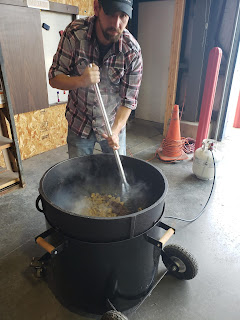The World's Largest Oliver Tractor
Did you know the largest Oliver tractor was built in 1954? While these vintage farm tractors may appear tiny compared to current tractors, they were solid and dependable. This old tractor was auctioned off by Mecum and had been refurbished and rebuilt with new parts. It would be an excellent addition to any farm. This article will provide further information on this classic tractor. As an added benefit, you will be able to bid on it for yourself!
Although it may be difficult to imagine, Oliver's tractors are still in use today. Their engines were created after WWII and re-engineered with a modern design. Hand tools and horses propelled the first models. Then, the internal combustion engine revolutionized agricultural machinery. 2255, the largest tractor ever produced by Oliver, was the largest tractor in production. Oliver continued to make tractors until the 1980s, when heavy-truck manufacturer White purchased it.
The Hundred Series was introduced right before Thanksgiving in 1959, and the sales staff went out to market the brand with a two-day event. While they did not go as big as Deere with their new tractor generation, they had a strong presence at the expo. This comprised eight Charles City homemakers riding Oliver 770s around the Hippodrome in Waterloo, Iowa. They had been practicing their square dance for months.
The 1900 series came in four different versions. A 4-53 Detroit engine powered the Series A. The other models had a six-speed transmission. Differential brakes were standard on all models. Furthermore, the all-green paint scheme reminded me of a vintage tractor. Finally, the middle-buster hood ornament gave the car a distinct look. Unfortunately, Oliver's production halted in the late 1980s. If you're considering purchasing an Oliver tractor, read this article to learn everything you can about this iconic farm machine.
Along with the OC-4, Oliver built the OC-4 with a three-cylinder Hercules IXB3 engine. These tractors featured a more robust industrial front grill. Oliver relocated manufacturing to Charles City, Iowa, in the 1960s and released the new industrial Series B model in 1965. However, the business decided to discontinue the production of crawler tractors in Charles City in 1965.
Oliver decided to outsource the engines for their larger tractors after the firm merged with Hart-Parr. Although they had previously worked with Perkins, Continental, and General Motors, Oliver chose Caterpillar as their engine source. In the 1970s, Oliver's primary opponent was Caterpillar, also known as Holt Manufacturing. Oliver no longer manufactures crawlers, but they do continue to manufacture giant tractors.
Oliver began chilling plowshares after its founding in 1857. He aspired to build the best plow in the world. When Oliver teamed up with Hart-Parr in the early 1920s, his idea became a reality. With the company's success, the Oliver name was finally included as the exclusive maker of tractors. The Oliver brand emerged on the front of these tractors and quickly became the industry standard for stationary balers.
From 1930 to 1965, the business expanded the 'Row Crop' line, a successful row-crop tractor. Until 1935, this was Oliver's only row crop tractor. Many models have since been referred to as Oliver Row Crop 77 or 88. Consider reading this post if you want to understand more about Oliver tractors. It's jam-packed with helpful information!
The trunnion-mount for the 2255's over/under transmission was one of its most intriguing features. The majority of other Oliver tractors had a chain coupler. 2255, on the other hand, employed a trunnion mount, which entailed a flange on the back of the over/under sliding inside an oversized flange on the front of the main transmission. This configuration allowed transmission oil to lubricate the coupler and eliminated shaft alignment issues.

Comments
Post a Comment